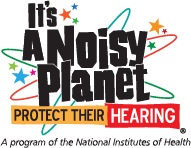Returning to school can be an exciting time for children as they reconnect with friends, meet their new teachers, and explore new subjects. As your children settle back into the school day routine, help them become aware of noise levels in their school environment.

Talk with your children about noise levels at school and the importance of quiet spaces. Ask them to identify the noisiest and quietest spots they’ve noticed during their school day. Give them examples of places that might be loud (gym, crowded hallways, cafeteria) and quiet (classroom during reading time, art class, library).
At the end of the school day, your children may board a noisy bus or wear their headphones to listen to music or play a videogame. Encourage your children to pay attention to the noise level of their after-school activities. Suggest that they listen to their music in a quiet environment so they don’t have to compete with the noises around them. You can also set volume limits on many music devices. Protect their hearing by encouraging them to give their ears a break by quietly reading on the bus and at home. They can also take a noise break by studying or doing homework without background music or TV.
With teacher and principal approval, your children can take a decibel meter to school to measure noisy and quiet spaces and share what they find with friends. Discuss the findings with your children and explain the dangers of prolonged or repeated exposure to any loud noise, especially if it is at or above 85 A-weighted decibels (dBA). Sound meters can be purchased from an electronics store or through websites. Downloadable sound meter apps are also available for most smartphones, such as the NIOSH Sound Level Meter App available for iOS devices.
Last Updated Date



